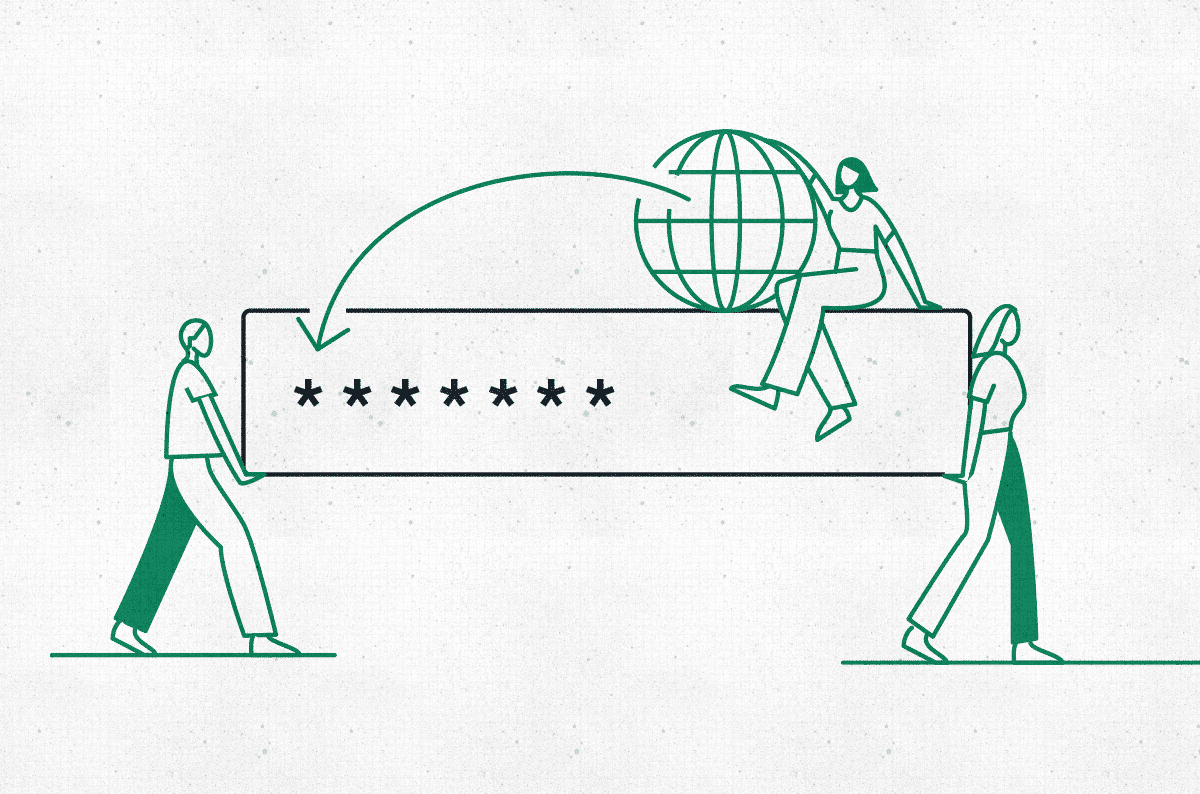|
Listen to post:
Getting your Trinity Audio player ready...
|
Hundreds of millions of people worldwide were directed to work remotely in 2020 in response to pandemic lockdowns. Even as such restrictions are beginning to ease in some countries and employees are slowly returning to their offices, remote work continues to be a popular workstyle for many people.
Last June, Gartner surveyed more than 100 company leaders and learned that 82% of respondents intend to permit remote working at least some of the time as employees return to the workplace. In a similar pattern, out of 669 CEOs surveyed by PwC, 78% say that remote work is a long-term prospect. For the foreseeable future, organizations must plan how to manage a more complex, hybrid workforce as well as the technologies that enable their productivity while working remotely.
The Importance of Secure Remote Access
Allowing employees to work remotely introduces new risks and vulnerabilities to the organization. For example, people working at home or other places outside the office may use unmanaged personal devices with a suspect security posture. They may use unsecured public Internet connections that are vulnerable to eavesdropping and man-in-the-middle attacks. Even managed devices over secured connections are no guarantee of a secure session, as an attacker could use stolen credentials to impersonate a legitimate user. Therefore, secure remote access should be a crucial element of any cybersecurity strategy.
The Hybrid Workforce: Planning for the New Working Reality | Download eBookHow to Secure Remote Access: Best Practices
Secure remote access requires more than simply deploying a good technology solution. It also demands a well-designed and observed company security policy and processes to prevent unauthorized access to your network and its assets. Here are the fundamental best practices for increasing the security of your remote access capabilities.
1. Formalize Company Security Policies
Every organization needs to have information security directives that are formalized in a written policy document and are visibly supported by senior management. Such a policy must be aligned with business requirements and the relevant laws and regulations the company must observe. The tenets of the policy will be codified into the operation of security technologies used by the organization.
2. Choose Secure Software
Businesses must choose enterprise-grade software that is engineered to be secure from the outset. Even small businesses should not rely on software that has been developed for a consumer market that is less sensitive to the risk of cyber-attacks.
3. Encrypt Data, Not Just the Tunnel
Most remote access solutions create an encrypted point-to-point tunnel to carry the communications payload. This is good, but not good enough. The data payload itself must also be encrypted for strong security.
4. Use Strong Passwords and Multi-Factor Authentication
Strong passwords are needed for both the security device and the user endpoints. Cyber-attacks often happen because an organization never changed the default password of a security device, or the new password was so weak as to be ineffective. Likewise, end-users often use weak passwords that are easy to crack. It’s imperative to use strong passwords and MFA from end to end in the remote access solution.
5. Restrict Access Only to Necessary Resources
The principle of least privilege must be utilized for remote access to resources. If a person doesn’t have a legitimate business need to access a resource or asset, he should not be able to get to it.
6. Continuously Inspect Traffic for Threats
The communication tunnel of remote access can be compromised, even after someone has logged into the network. There should be a mechanism to continuously look for anomalous behavior and actual threats. Should it be determined that a threat exists, auto-remediation should kick in to isolate or terminate the connection.
Additional Considerations for Secure Remote Access
Though these needs aren’t specific to security, any remote access solution should be cost-effective, easy to deploy and manage, and easy for people to use, and it should offer good performance. Users will find a workaround to any solution that is slow or hard to use.
Enterprise Solutions for Secure Remote Access
There are three primary enterprise-grade solutions that businesses use today for secure remote access: Virtual Private Network (VPN); Zero Trust Network Access (ZTNA); and Secure Access Service Edge (SASE). Let’s have a look at the pros and cons of each type of solution.
1. Virtual Private Network (VPN)
Since the mid-1990s, VPNs have been the most common and well-known form of secure remote access. However, enterprise VPNs are primarily designed to provide access for a small percentage of the workforce for short durations and not for large swaths of employees needing all-day connectivity to the network.
VPNs provide point-to-point connectivity. Each secure connection between two points requires its own VPN link for routing traffic over an existing path. For people working from home, this path is going to be the public Internet. The VPN software creates a virtual private tunnel over which the user’s traffic goes from Point A (e.g., the home office or a remote work location) to Point B (usually a terminating appliance in a corporate datacenter or in the cloud). Each terminating appliance has a finite capacity for simultaneous users; thus, companies with many remote workers may need multiple appliances. VPN visibility is limited when companies deploy multiple disparate appliances.
Security is still a considerable concern when VPNs are used. While the tunnel itself is encrypted, the traffic traveling within that tunnel typically is not. Nor is it inspected for malware or other threats. To maintain security, the traffic must be routed through a security stack at its terminus on the network. In addition to inefficient routing and increased network latency, this can result in having to purchase, deploy, monitor, and maintain security stacks at multiple sites to decentralize the security load. Simply put, providing security for VPN traffic is expensive and complex to manage.
Another issue with VPNs is that they provide overly broad access to the entire network without the option of controlling granular user access to specific resources. There is no scrutiny of the security posture of the connecting device, which could allow malware to enter the network. What’s more, stolen VPN credentials have been implicated in several high-profile data breaches. By using legitimate credentials and connecting through a VPN, attackers were able to infiltrate and move freely through targeted company networks.
2. Zero Trust Network Access (ZTNA)
An up-and-coming VPN alternative is Zero Trust Network Access, which is sometimes called a software-defined perimeter (SDP). ZTNA uses granular application-level access policies set to default-deny for all users and devices. A user connects to and authenticates against a Zero Trust controller, which implements the appropriate security policy and checks device attributes. Once the user and device meet the specified requirements, access is granted to specific applications and network resources based upon the user’s identity. The user’s and device’s status are continuously verified to maintain access.
This approach enables tighter overall network security as well as micro-segmentation that can limit lateral movement in the event a breach occurs.
ZTNA is designed for today’s business. People work everywhere — not only in offices — and applications and data are increasingly moving to the cloud. Access solutions need to be able to reflect those changes. With ZTNA, application access can dynamically adjust based on user identity, location, device type, and more. What’s more, ZTNA solutions provide seamless and secure connectivity to private applications without placing users on the network or exposing apps to the internet.
ZTNA addresses the need for secure network and application access but it doesn’t perform important security functions such as checking for malware, detecting and remediating cyber threats, protecting web-surfing devices from infection, and enforcing company policies on all network traffic. These additional functions, however, are important offerings provided by another secure remote access solution known as Secure Access Service Edge.
3. Secure Access Service Edge (SASE)
SASE converges ZTNA, NextGen firewall (NGFW), and other security services along with network services such as SD-WAN, WAN optimization, and bandwidth aggregation into a cloud-native platform. Enterprises that leverage a SASE networking architecture receive the security benefits of ZTNA, plus a full suite of converged network and security solutions that is both simple to manage and highly scalable. It is the optimal enterprise VPN alternative, and the Cato SASE solution provides it all in a cloud-native platform.
Cato’s SASE solution enables remote users, through a client or clientless browser access, to access all business applications via a secure and optimized connection. The Cato Cloud, a global cloud-native service, can scale to accommodate any number of users without deploying a dedicated VPN infrastructure. Remote workers (mobile users too!) connect to the nearest Cato PoP – there are more than 60 PoPs worldwide – and their traffic is optimally routed across the Cato global private backbone to on-premises or cloud applications. Cato’s Security as a Service stack protects remote users against threats and enforces application access control.
The Cato SASE platform provides optimized and highly secure remote access management for all remote workers. For more information on how to support your remote workforce, get the free Cato ebook Work From Anywhere for Everyone.










